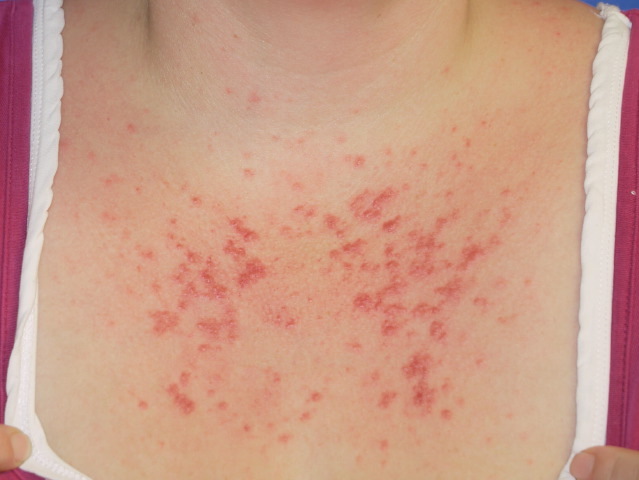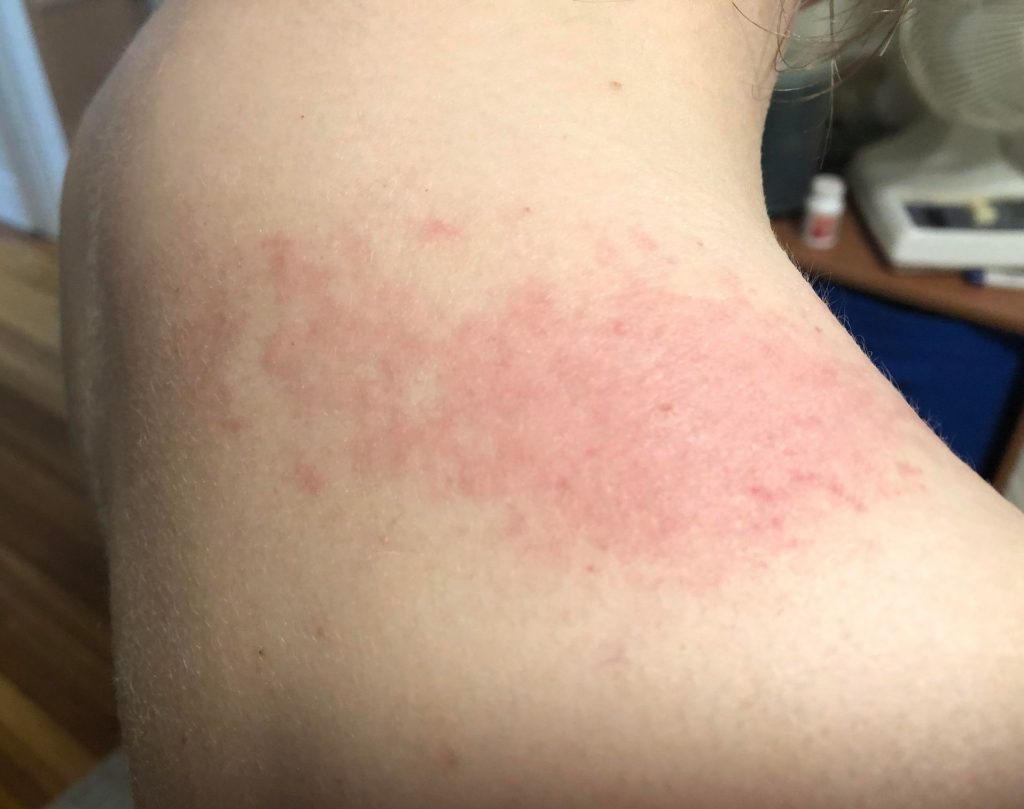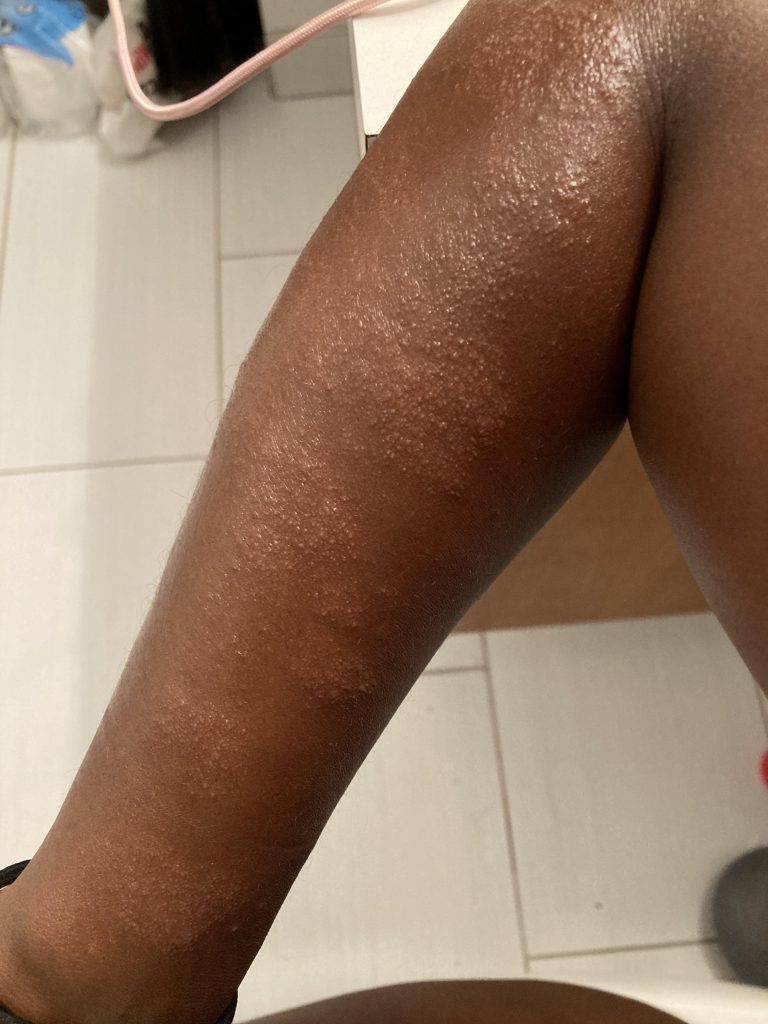
Polymorphic light eruption (PMLE, PLE) is the commonest of the idiopathic
photodermatoses. It is sometimes known as ‘sun allergy’ or prickly heat. PLE affects
about 15% of the young adult female Caucasian population in northern Europe and may
present in young adults or childhood. Genetic factors probably play some part in the
pathogenesis. The abbreviation is confusing—PLE is not a form of cutaneous lupus
erythematosus (LE).
UVR (mostly UVA; sometimes UVA and UVB) provokes a T-cell response. The
mechanism is unclear. It may be caused by failure of normal photoimmunosuppression.
Phototesting can be normal, but provocation testing (UVA or solar-simulated light)
usually provokes a rash.

What should I look for?
• A story of an itching or burning rash that erupts within 2h of exposure to UVR but, in
some patients, may not develop for 24–48h, or even longer. (the history is usually
diagnostic.)
• A rash that fades within 1–6 days, leaving normal skin (no scars).
• Erythematous papules, plaques, vesicles, or, less often, haemorrhagic blisters. The rash
is polymorphic in its presentation in populations, but individuals usually have one form
of the disease.
• The problem usually presents in spring, but some patients only develop the rash when
they go on holiday to a sunny climate on ‘holiday- exposed sites’. Sunlight reflected from
snow may provoke PLE.
• The rash may be triggered by as little as 10min of direct sunlight.
• Sunlight penetrating window glass (UVA) may cause the rash, as can unshielded
fluorescent lights and UVA from sunbeds.
• Chronically exposed skin on the face and hands is usually spared.
• The rash usually erupts less frequently, as the summer progresses (‘hardening’),
provided exposure to sunlight continues.

What should I do?
Exclude subacute cutaneous LE, solar urticaria and oral contraceptive (oestrogen)-
induced photosensitivity (rare).
Management options include:
• Potent topical corticosteroids for acute eruptions.
• Gradual sunlight exposure to induce tolerance (may be difficult to achieve) and
continued sun exposure to maintain tolerance.
• Protective clothing: broad-brimmed hats, long sleeves.
• High-factor UVA/UVB sunscreens may prevent PLE. (UVB sunscreens may worsen
PLE by allowing UVA through, but diminishing the protective immunosuppression
produced by UVB).
• Oral prednisolone 15–20mg/day for 2–3 days may be required to control an acute
eruption, e.g. while on holiday.
• Desensitization with UVB each spring. treat x2–3/week for 3–5 weeks. Patients must
continue exposure to sunlight to maintain tolerance. Repeat annually if tolerance is not
maintained.
• Hydroxychloroquine can be helpful in some cases.